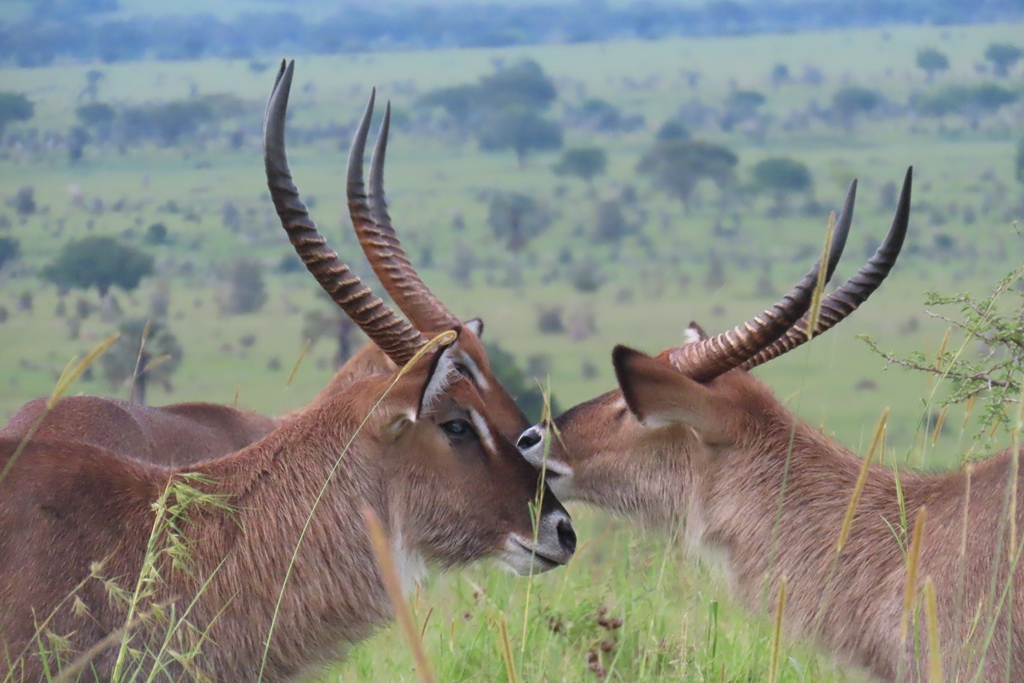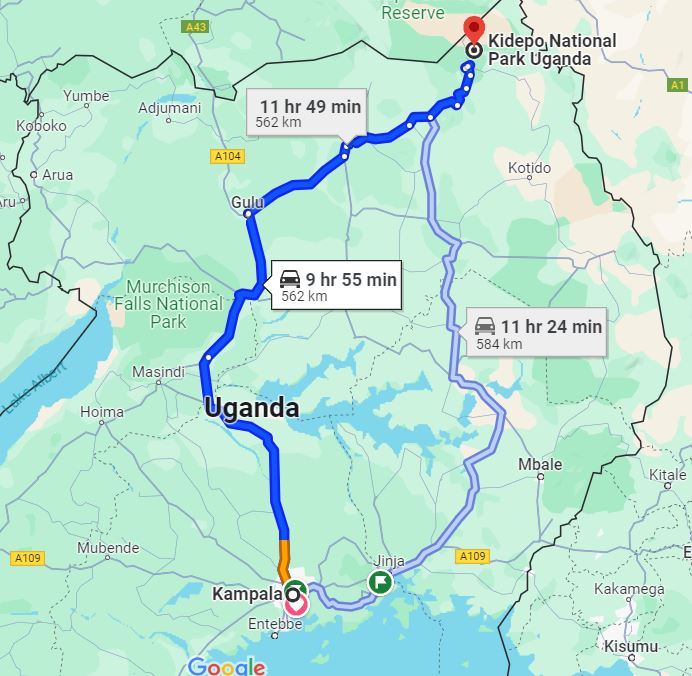Uganda parks & attractions
Kidepo National Park

Kidepo Valley National Park covering 442 square kilometers is located in the extreme north eastern corner of Uganda. It is the remotest of Uganda’s national parks, located over 600km from Kampala. To reach Kidepo Valley National Park by road takes no less than 12 hours of drive which is why it is one of the least visited parks in the country leaving it isolated from the popular Uganda safaris and tours circuit.
Kidepo Valley National Park is located in the semi-arid region of Karamoja. It is one of the most pristine and least disturbed of Africa’s wildernesses, and according to CNN Travel, Kidepo is one of Africa’s best parks with the most beautiful landscape.
Kidepo National Park has two main biomes; savanna/acacia grassland in the Narus Valley which lies in the southern area of the park, and semi-arid short grass area in the northern Kidepo Valley. The park is generally dry, experiencing only one rainy season of April – September. It has two rivers, Kidepo and Narus both of which are seasonal only flowing during the rainy season. During the long dry spells water can only be found in wetlands and remnant pools in the Narus Valley.
adventure and widlife
Wildlife in Kidepo National Park
Wildlife in Kidepo National Park

While the other wildlife parks in Uganda can support a far greater biomass of animals, Kidepo Valley National Park supports a wider diversity. Of the 80 mammal species in the park 28 cannot be found in any other park in Uganda including Caracal, Stripped Hyena, Aardwolf, Cheetah, Bat-eared Fox and Hunting dog are carnivore species unique to Karamoja region and protected within Kidepo. Kidepo also harbors 5 species of primate including the Kavirondo Bush Baby which is also unique to the area. The park also has a number of rare ungulates including the Greater and Lesser Kudu, Chandlers Mountain Reedbuck, Klipspringer, Dikdik, Bright Gazelle, Beisa Oryx, and Roan Antelope. Kidepo has unusually small crocodiles with maximum length of 2.5m compared to the Nile crocodiles which regularly exceed 4m. The small size is apparently a result of the limited food availability.
The common animals include Elephants, Zebra, Bush Pigs, Rothschild Giraffes, Eland, Jackson’s Hartebeest, Buffalo, Oribi, Lion, Leopard, Spotted Hyena, Black-backed and Side-backed Jackal. Kidepo is the best park in Africa for great buffalo herds!!
Birdlife in Kidepo is remarkable too with 475 species, second to Queen Elizabeth National Park which has 625. It is a park to go to for arid associated species such as the Ostrich and Kori Bustard which are unique to this region. Kidepo is also outstanding for its birds of prey with 58 species so far recorded including Verreaux’s Eagle, Egyptian Vulture, and Pygmy Falcon.
Things to do in Kidepo National Park
Animal watching via Game drives
Game drives are mostly done along the Narus Valley since much of the year the park’s wildlife gather here. This area is well designed with track circuits and from a 4×4 tour car visitors have clear views of herbivores grazing in the short savanna plains. Lions and other cats are often sighted on top of rocks and kopjes looking out for prey in the vast plains. The best time for the game drive is in the early morning when herbivores are grazing and the cats are on hunt! During the afternoon game drive you shall find many animals around the water sources.
Game viewing can also be done along the Kidepo Valley where one can enjoy the sand bed river especially the dry seasons. The sand bed is like an oasis in a desert. It is lined with palms trees and has plenty of birds. It is advisable to visit the northern area in the morning as the afternoon is unbearably hot there and comes with more tsetse flies. Crossing the sand bed river another highlight is the Kanangorok Hot Springs where you enjoy the spectacular landscape and can also picnic near the springs which the local people believe have magic powers.
The Sand bed along River Kidepo
The sand bed experience during the dry season on river Kidepo can vey fascinating. One can enjoy the wilderness experience while listening to different bird calls.
River Kidepo is an intermittent sand river found in the northern part of the park. It stands out because it is lined by Borasus palms that make it appear like an oasis in the Sahara. Many bird species can be found around this area.
Birdwatching in Kidepo National Park
Kidepo Valley National Park is one of Uganda’s Important Bird Areas (IBA) and an incredible Uganda birding destination. The park is only being discovered by birdwatchers since it has been off the main tourist circuit and more bird species are being added to the check list of over 475 recorded species. Some of Africa’s rarest and most sought-after birds occur in the park including the Black-breasted Barbet and the Karamoja Apalis. The park is good for semi-arid species which cannot be found in other parts of Uganda such as the Ostrich. It is also outstanding for its birds prey with 58 species recorded in the area.
Nature walks
Nature walks can be done around Apoka camp at any time of the day and visitors are able to observe a number of animals such as Zebra, Elephant, Reedbuck, Buffalo. There also long trails and circuits which visitors can walk in the early morning to observe species at close range and enjoy the beautiful wilderness.
Climbing Mount Morungole & Visit the IK tribe
Trekking on Morungole Mountain is an attractive activity which leads to the IK people. The great Moroungole expedition which involves a day’s hike through varying vegetation and rocky terrain commanding spectacular views of Kidepo Valley National Park will expose visitors to variety of dances from the IK, their way of life, their unique settlements and you get to learn their unique migration history.
Karamajong Community tour
The Karamajong tribe is the main local community inhabiting the Karamoja region and neighboring the park. They are some of the most remote people in Uganda and who have not been embraced modernization. The Karamajong culture and way of life is as undisturbed and Kidepo’s wilderness. Set out for a visit to enjoy their unique cultures, traditional houses called manyatta and their setting of homesteads, traditional dances, traditional handcraft stools, spears and hand bungles from beads.
How to get to Kidepo National Park

Accomodation in Kidepo National Park
Budget: UWA Bandas
Mid-range: Kidepo Savannah Lodge
Luxury: Apoka Safari Lodge
Book a safari trip to Kidepo National Park




